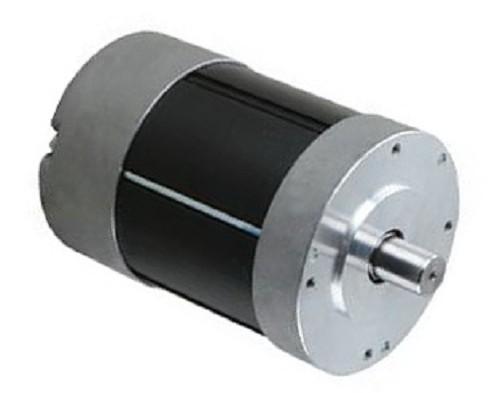Brushless motor manufacturer teaches you the common control methods of the brushless motor
 Nov 10, 2022|
Nov 10, 2022| View:65
View:65With the development of society, the brushless motor as a more advanced motor is widely used in various electrical equipment. Therefore, if you are interested in brushless motors, you may want to learn about the common control methods of brushless motors. As a professional brushless motor manufacturer, the following will explain to you in detail.

1. Common control methods of brushless motors. There are 3 control methods for brushless DC motors: FOC (also known as vector frequency conversion, magnetic field vector directional control), square wave control (also known as trapezoidal wave control, 120° control, 6-step commutation control), and sine wave control.
(1) Square wave control. Square wave control uses a Hall sensor or a sensorless estimation algorithm to obtain the position of the motor rotor. It then performs six commutations (one every 60°) based on the rotor position over a 360° electrical cycle. The motor outputs a specific direction of force at each commutation position. Under this method of control, the phase current waveform of the motor is close to a square wave, so it is called square wave control.
The advantages of the square wave control method are a simple control algorithm, low hardware cost, and high motor speed that can be obtained by using a controller with regular performance; the disadvantage is that the torque fluctuation is large, there is a certain amount of current noise, and the efficiency does not reach the maximum. Square wave control is suitable for applications with low requirements for motor rotation performance.
(2) Sine wave control. The sine wave control method uses an SVPWM wave, and the output is a 3-phase sine wave voltage. The corresponding current is also a sine wave current. This method does not have the square wave control commutation or the idea that an infinite number of commutations are made in one electrical cycle. Sine wave control has less torque fluctuation and less current harmonics than square wave control, making the control feel more "delicate." Still, the performance requirements of the controller are slightly higher than square wave control, and the efficiency of the motor cannot be maximized.
(3) FOC control. Sine wave control performs the voltage vector control and indirectly performs the current size control but cannot control the direction of the current. FOC control method can be regarded as the upgrade version of sine wave control, which realizes the current vector control, that is, realizes the motor stator field vector control.
The advantages of the FOC control method are small torque fluctuation, high efficiency, low noise, and fast dynamic response; disadvantages are high hardware cost, high requirements for controller performance, and matching of motor parameters. Due to the obvious advantages of FOC, it has gradually replaced the traditional control method in many applications and is highly favored in the motion control industry.
These are the three common control methods for brushless motors, which can be selected reasonably according to their needs.










View More(Total0)Comment lists